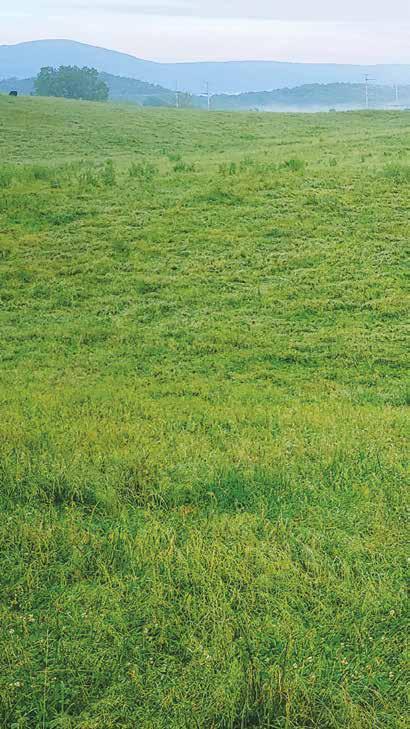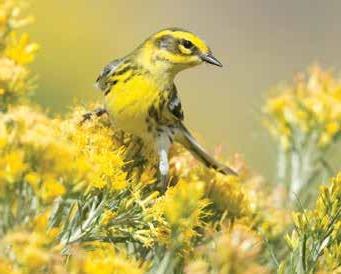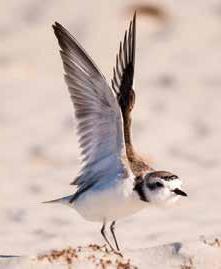Meadows, carefully timed haying, and regenerative grazing are among the tools Northern Virginia farmers are using to bring back grassland birds in the most recently declared BirdScape. by Amy Johnson and David Wiedenfeld
T
he Mid-Atlantic region is known for its symbolic Blue Ridge Mountains, bays and marshes, and flourishing deciduous forests. While these important habitats harbor some of North America’s most admired bird species, there’s one important ecosystem that’s often overlooked for bird conservation in these human-dominated landscapes — eastern grasslands. The majority of eastern grasslands are on privately owned land under some form of agricultural management. They provide critical habitat for some of our nation’s most sharply declining species: For example, the Eastern Meadowlark, which has declined by more than 70 percent since the 1970s, relies upon private lands for 97 percent of its remaining habitat in the U.S. To conserve this iconic bird, it is essential for landowners, scientists, and conservation managers to collaborate on effective management of these landscapes. What’s happening in Virginia provides a hopeful example for how this can work elsewhere.
Rolling Out a Green Carpet for Grassland Birds Nestled among the bucolic rolling hills just west of Washington, D.C., and coincidentally surrounding the home office of ABC in The Plains, Virginia, there exists a community of farmers, land managers, and homeowners who are collaborating with a team of Smithsonian scientists to help bring back grassland birds. Virginia Working Landscapes (VWL), a program of the Smithsonian Conservation Biology Institute in Front Royal, collaborates with landowners, community scientists, universities, and other local partners to study the region’s biodiversity on private lands. Since 2010, the VWL team has surveyed more than 150 properties across 16 counties in Northern Virginia’s Piedmont and Shenandoah Valley. Together, these properties cover more than 80,000 acres, from hilly Loudoun County to the mountains
22
B I R D CO N S E R V A TI ON | W I NTE R 2020-21
In
VIRG
bordering Augusta County. With much of this region under private ownership, it is an ideal landscape to gain a better understanding of how the actions of landowners influence the wildlife with which we share our grasslands. These properties now also form an integral part of a newly declared conservation zone, or BirdScape, established this year by ABC, VWL, and partners at the Piedmont Environmental Council (PEC). It’s called the Northern Virginia Piedmont and Shenandoah Valley BirdScape. ABOVE: Northern Virginia farmers are helping to bring back grassland birds by maintaining meadows and timing hay harvests to accommodate nesting. Photo by Amy Johnson RIGHT: Bobolink nesting, from egg to fledgling. Photos by Bernadette Rigley





